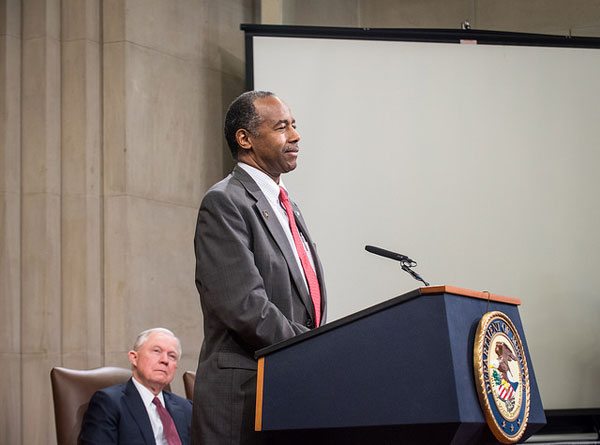
April 13, 2018; New York Times and Newsday
Fifty years ago, just a few days after Martin Luther King Jr. was murdered and with many parts of the nation still in turmoil, President Lyndon Johnson signed into law the Fair Housing Act, which, he said, “proclaims that fair housing for all—all human beings who live in this country—is now a part of the American way of life.” Though the intent of this legislation was to erase the formal and informal barriers that had kept white and black Americans living separately, the reality has only inched forward since then—if it has moved at all.
Perhaps more than we even knew in 1968, where you live, particularly where you grow up, has a large impact on the quality of life. In a harmful feedback loop, racial and economic segregation reinforce each other and leave their mark on future generations. According to Natalie Holmes and Alan Berube:
Inequality at the local level may be undesirable for a variety of reasons. It may diminish the ability of schools to maintain mixed-income populations that produce better outcomes for low-income students. It may narrow the tax base from which municipalities raise the revenues needed to provide essential public services and weaken the collective political will to make those investments. And local inequality may raise the price of private-sector goods and services for poor households, making it even more difficult for them to get by on their limited incomes.
One of the law’s authors, former US Vice President Walter Mondale, wrote in an op-ed for the New York Times that he saw the law as specifically designed to end “the large-scale exclusion and isolation of blacks from white communities. In the Jim Crow South, white and black citizens were kept apart to confirm and reinforce the idea of white superiority. Residential segregation accomplished the same result elsewhere, but on a much larger scale. The Fair Housing Act was intended to prevent and reverse all this.”
Sign up for our free newsletters
Subscribe to NPQ's newsletters to have our top stories delivered directly to your inbox.
By signing up, you agree to our privacy policy and terms of use, and to receive messages from NPQ and our partners.
Five decades later, there has been some change, but the Fair Housing Act’s vision still seems a long way off. According to Vice President Mondale, “the law has also often suffered from neglect. The public servants tasked with implementing it have often forgotten—or refused to pursue—its goal of building an integrated society. The evil of residential segregation has waned at some times and in some places…the bureaucracy has often allowed people who prefer the segregated status quo to obstruct and delay. HUD, for instance, did not get around to fully carrying out these provisions until 2015.”
With the election of Donald Trump, the federal government’s priorities have changed. The Housing and Urban Development department under Secretary Ben Carson, despite it having the responsibility to enforce the Fair Housing Act, according to Newsday, “recently announced it is suspending, for as much as seven years, city and county obligations to address segregation. In addition, the very agency charged with ensuring equal access to housing has proposed striking from its mission statement the powerful words ‘build inclusive and sustainable communities free from discrimination’ in favor of weaker language.”
With this change in direction, we again must ask ourselves if the Fair Housing Act’s vision of our nation remains viable, and what does it require of us to make it happen? Is “fair housing for all” still our yardstick? For the bill’s authors, the goals were to integrate where we lived and not just to counter individual acts of discrimination on a case-by-case basis. Have we really reached a point, as the Trump Administration seems to believe, that integration is not our goal and there are few acts of discrimination left to challenge?
President Johnson’s signing statement seems prescient, as it ended by recognizing “we have come some of the way, not near all of it. There is much yet to do.” Ceasing to push forward toward the FHA’s objective is to ensure that millions of Americans of color will be locked into a caste system which keeps them at the bottom, struggling for the basics of life. Fair housing remains the law of the land; advocates and policymakers still have work to do if it is to be realized.—Martin Levine











